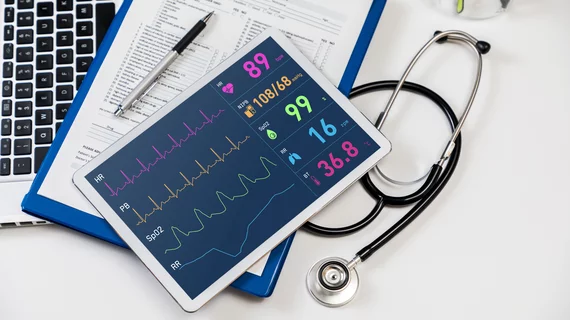Intensive therapy to keep blood pressure (BP) levels below 130/80 mmHg helped lower the risk for heart attacks, strokes and other CV complications in patients with concomitant type 2 diabetes and hypertension, researchers have found.
Diabetes alone raises a person’s risk for cardiovascular complications, senior study author J. Bill McEvoy, MB, BCH, MHS, and colleagues wrote in Hypertension April 29, and adding untreated high blood pressure to the equation only magnifies that risk. McEvoy and his team examined data from 10,948 type 2 diabetics enrolled in the ADVANCE trial—which had previously proven a link between more intensive BP therapy and improved CV outcomes—to determine whether the benefits and risks of intensified therapy were influenced by patients’ baseline BP or individual CVD risk.
All patients in McEvoy et al.’s study pool had hypertension and were flagged as having moderate-to-high cardiovascular risk. Individuals were randomized to receive either an antihypertensive combination treatment of perindopril and indapamide or placebo, aiming for a BP below 130/80 mmHg.
The 2017 American College of Cardiology/American Heart Association BP guidelines recommend starting antihypertensive treatment at a BP of 130/80 mmHg for diabetics with high blood pressure—a significant reduction from the previous industry standard of 140/90 mmHg. McEvoy and colleagues said aiming for a lower threshold is the safest bet for diabetics who are unsure of their optimal BP target.
During 4.3 years of follow-up, 837 patients in the study died, while others logged a total of 966 major vascular events, including MIs, strokes, diabetic kidney disease and diabetic eye disease. The authors said the group receiving more intensive BP therapy experienced 9% fewer events and 14% fewer deaths than the placebo group, and results stayed strong regardless of a patient’s baseline BP or 10-year CVD risk.
“Regardless of the baseline systolic BP (SBP) or atherosclerotic CVD group, the intervention arm had lower on-treatment SBP compared with the placebo arm,” McEvoy et al. wrote in Hypertension. “For those with baseline SBP of more than 140 mmHg, most of the benefit for more intensive therapy was driven by the group with baseline SBP of 130 to 139 mmHg—a finding that supports current ACC/AHA guidelines.”

